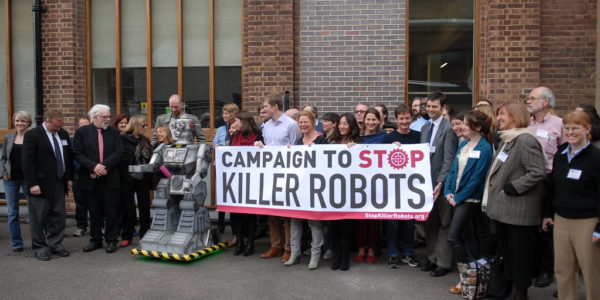If you’ve been worried about killer robots, you probably had a different scenario in mind. But an article in Phys.org says that robots are already here, causing deaths.
The automation of U.S. manufacturing—robots replacing people on factory floors—is fueling rising mortality rate among America’s working-age adults, according to a new study by researchers at Yale and the University of Pennsylvania.
They’re not performing robotic massacres or causing freak factory accidents.
Instead, they’re causing death by correlation. Or, as the researchers phrased it, “Our analysis shows that automation exacts a toll on the health of individuals both directly—by reducing employment, wages, and access to healthcare—as well as indirectly, by reducing the economic vitality of the broader community.”
Death tolls rise with automation
The researchers looked at the rise of automation and at death rates in the areas where they found that rise in automation. They saw that suicides, drug overdoses, and stress-related health issues such as cancer and cardiovascular disease were higher when automation increased.
They posited that the behavioral changes leading directly to those deaths resulted from loss of jobs or lessened wages, which they attributed to increasing automation.
Have robots led to job losses? We know that there are fewer U.S. manufacturing jobs now than there used to be, but we also know that there are literally hundreds of thousands of unfilled manufacturing jobs.
Has automation caused lower wages? In fact, we know that manufacturing jobs pay more now, and automation has led to fewer low-paid jobs and more better-paid ones.
Do falling wages lead to suicide? One controversial study suggested that a higher minimum wage could reduce suicide rates, but the CDC claims that the rise in suicide rates doesn’t have a clear cause. They list “relationships, substance use, physical health, and job, money, legal, or housing stress” as possible culprits.
A serious problem
The rise in mortality rates is a serious problem. Increased deaths from suicide, drug overdoses, and deaths from chronic diseases like cancer and heart disease are tragic. We don’t mean to make light of the problem.
But we are far from convinced that the correlation of these problems with increasing automation, which is found all across the nation, is evidence of causation.
The researchers themselves pointed out that more drug overdoses took place in areas with higher supplies of opioids. Here’s how they phrased this finding: “We find suggestive—but imprecisely estimated—evidence that the effect of automation on drug overdose mortality may be higher in areas with higher per capita supply of prescription opioids.”
Yep, in areas with higher availability of opioids, automation seems to lead to more drug overdoses.
The researchers also compared U.S. mortality rates with European rates, without considering the rise of automation in Europe in their calculations.
And they did not factor in Americans’ health habits, such as the fact that fewer than a quarter of us exercise regularly and only 10 percent get enough fruits and vegetables. Instead, they focused on the increase in automation.
Correlation is not causation.
